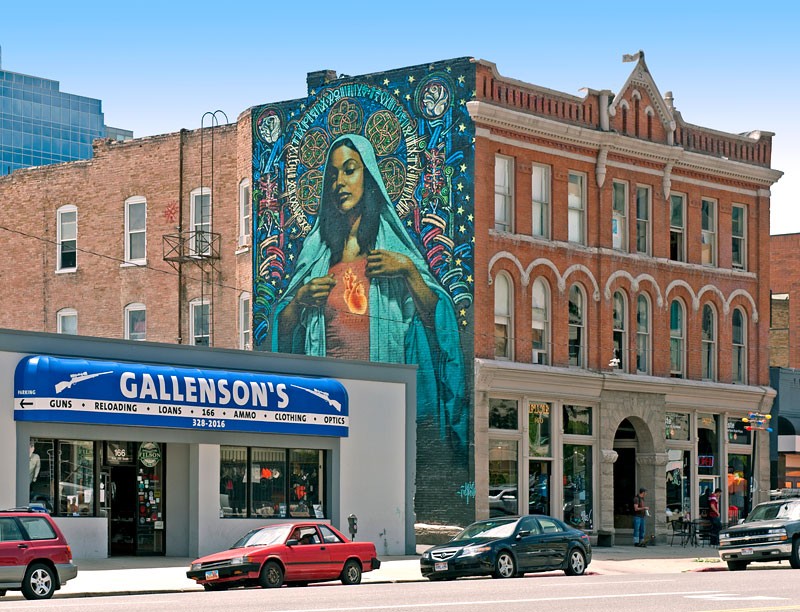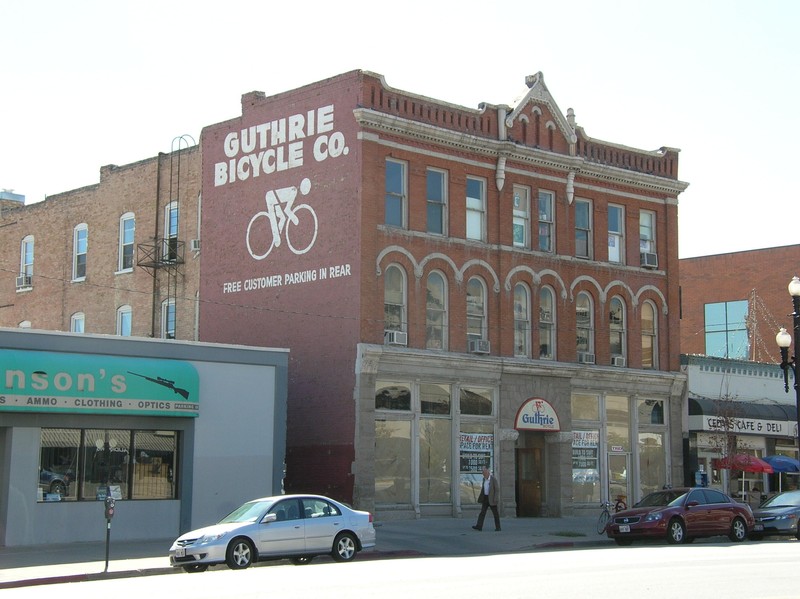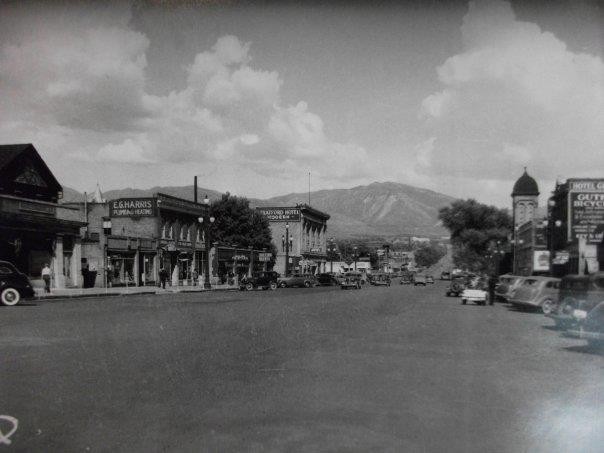J.A. Fritsch Building and the Guthrie Bicycle Company of Salt Lake City
Introduction
Text-to-speech Audio
Built in 1890, this historic Salt Lake building served as the home to the Fritsch Investment Company. The building is likely best known, however , as the home of the Guthrie Bicycle Company from 1931 to 2011. Established in 1888 as the Meredith Brothers and later expanded with the investment and management of James William Guthrie, Guthrie Bicycle is the oldest bicycle shop in the country. In its early years, the company produced its own bicycles, including the High Wheelers that were popular for a short time in the late 19th century. In addition to the bicycle shop on the first floor of the building, numerous artists maintained studios on the upper floors of the building in addition to a host of storefronts, offices, and even boarding houses. The building also arrived during a Salt Lake City building boom. In the end, it stands as a reminder of many histories, ranging from immigration and architecture to urban and cultural history.
Images
June 16, 2011

Guthrie Bicycles: Called the building home from the 1930s to 2011.

1930s: The Fritsch Building is the tallest building on the left (towards the end of the street). Guthrie had moved in not long before this picture was taken.

Backstory and Context
Text-to-speech Audio
The three-story stone and brick J. A. Fritsch Block opened for its doors in 1890 as an office building for the 'Fritsch Investment Company, an early investment business founded by Francis and John A. Fritsch, Utah immigrants of 1889. In the 1930s, Guthrie Bicycle Company -- Utah's oldest bicycle company -- moved into the building and remained there until 2011. As well, The block is architecturally significant as it was designed by the Carroll and Kern architectural firm, Utah's most prolific during the "Utah Building Boom during the late 1880s and early 1890s.
From 1820 to 1870, over seven and a half million immigrants came to the United States. About a third of those immigrants arrived from Prussia and other lands that became modern Germany, including Francis Fritsch. Born in Germany in 1835, Francis Fritsch emigrated to Wapakoneta, Ohio, in 1850. In 1889 he moved to Salt Lake with his son, John.
The father and son founded the Fritsch Investment Company with the Fritsch Block serving as the company's headquarters. In 1912 the family expanded the company by incorporating a new Fritsch Loan and Investment Company. John died climbing Mt. Rainier in 1916, but Francis remained active in the business until roughly 1920.
In addition to the Fritsch businesses, numerous artists maintained residences and studios in its rooms. Also, stores, offices and even boarding houses and small hotel operations operated within the Fritsch Block. But, by the late 1920s, financial difficulties forced Fritsch Loan and Trust to sell the building. Lorus Manwaring, Sr., purchased the building and established it as the home of his Guthrie Bicycle Company, which had previously operated from a building located at 228 East 2nd South. Manwaring leased the upper floor as hotel space for a few years and maintained his bicycle business downstairs.
From about 1935 to 1945, Manwaring lived in an upstairs apartment that had remodeled, including updating and the electrical wiring (he then updated the wiring throughout the building). Though he passed away in 1966, his son took over the business, who subsequently handed it down to his son-in-law in in 1970. The Guthrie Bicycle shop remained in the building until 2011.
The building also serves as a physical reminder of a time when Salt Lake City enjoyed a construction boom, with the Carroll and Kern Firm (who built the Fritsch Block) a significant part of that story. Although the firm was only active for two years, they built 45 buildings in that time, nearly twenty more than it closest competitor during that same period and far more than most every other firm during that span.
At that time, Utah on its way to statehood (the divisions between the Mormon Church (LDS) and the Federal Government eased in the wake of the "Mormon Conflict"), but also silver mining had helped make the town an attractive to many. Indeed, in the 1880s and 1890s, the decades after Brigham Young's death in 1877, several church leaders including John Taylor, George Q. Cannon, and Joseph F. Smith, took ownership or invested heavily in nearby silver mines.
All told, the Fritsch Block is more than just an old building; it's the physical manifestation of numerous histories converging at Salt Lake City during the 1890s. A few include German immigration; Salt Lake City urban history; the rise of the bicycle's popularity; and the personal accounts of the Fritsch family and their tenants.
Sources
McCormick, John S. The Historic Buildings of Downtown Salt Lake City.. Salt Lake City: Utah State Historical Society, 1982. Digitized by J. Willard Marriott Library, University of Utah. Accessed January 30, 2018. https://collections.lib.utah.edu/details?id=420644&q=Fritsch&parent_i=420652
Roberts, Allen D. "Nomination Form: J.A. Fritsch Block." National Register of Historic Places. April, 29, 1976. https://npgallery.nps.gov/GetAsset/0b7430db-57c9-4390-b86d-a2e486332974
--- ---- ---. Salt Lake City's Historic Architecture. Charleston, SC: Arcadia Publishing, 2012.
Sadler, Richard W. "The Impact of Mining on Salt Lake City." Utah Historical Quarterly, Vol. 47 (Summer, 1979).
Photo Sources
Roberts, Allen D. "Nomination Form: J.A. Fritsch Block." National Register of Historic Places. April, 29, 1976. https://npgallery.nps.gov/GetAsset/0b7430db-57c9-4390-b86d-a2e486332974
--- ---- ---. Salt Lake City's Historic Architecture. Charleston, SC: Arcadia Publishing, 2012.
Sadler, Richard W. "The Impact of Mining on Salt Lake City." Utah Historical Quarterly, Vol. 47 (Summer, 1979).
Photo Sources
Guthrie Building: Utah Center for Architecture, http://utahcfa.org/project/j-a-fritsch-block-guthrie-bicycle-co
June 16, 2011: https://noehill.com/ut_salt_lake/nat1976001826.asp
1930s: Via Guthriebike.com (Guthrie Bicycles Website), https://guthriebike.com/about/our-history-over-125-years-pg53.htm
